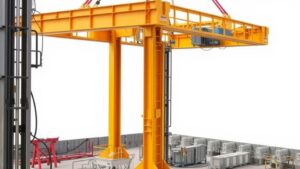Developing Recovery Systems for Unconventional Ore Deposits
Developing Recovery Systems for Unconventional Ore Deposits
The exploration and extraction of unconventional ore deposits, such as polymetallic nodules, rare earth elements, and lithium-rich brines, are becoming increasingly important due to the rising global demand for these minerals. The development of recovery systems for these deposits requires a comprehensive understanding of geology, mineral processing, and environmental management.
Understanding Unconventional Ore Deposits
Unconventional ore deposits refer to mineral resources that are not readily accessible or require unique extraction techniques compared to traditional ores. These deposits often contain valuable metals and elements essential for modern technologies, including electronics, renewable energy, and electric vehicles.
- Polymetallic nodules: Mainly found on the ocean floor, these nodules contain nickel, cobalt, copper, and rare earth elements.
- Heavy mineral sands: A rich source of titanium, zircon, and rare earth elements, primarily found in coastal areas.
- Lithium-rich brines: Found in salt flats, these brines are crucial for production of lithium-ion batteries.
Designing Effective Recovery Systems
Creating effective recovery systems involves several critical stages: assessment of deposit characteristics, selection of recovery techniques, and implementation of sustainable practices.
Assessment of Deposit Characteristics
The first step in developing a recovery system is understanding the unique characteristics of the ore deposit. This assessment usually includes:
- Geological mapping and sampling to determine mineral composition.
- Analysis of the ores physical and chemical properties.
- Economic feasibility studies to evaluate extraction costs versus potential revenues.
For example, the assessment of lithium brines from South Americas Lithium Triangle has been crucial in understanding the concentration and extraction viability of lithium, enabling companies to develop tailored recovery systems.
Selection of Recovery Techniques
Recovery techniques for unconventional ores vary widely based on the ore type and its location. Key methods include:
- Hydrometallurgy: This method is widely used for extracting metals from ores using aqueous solutions. It is particularly effective for lithium brines and rare earth elements.
- Bioleaching: The use of microbial organisms to recover metals from ores, increasingly important for low-grade ores and certain complex deposits.
- Physical separation techniques: Methods such as magnetic separation and flotation are beneficial for concentrating valuable minerals from ores like heavy mineral sands.
An example of hydrometallurgy is the extraction of nickel and cobalt from polymetallic nodules, which employs sulfuric acid leaching to recover metals efficiently.
Useation of Sustainable Practices
The mining industry faces increasing scrutiny regarding environmental impacts, necessitating the integration of sustainable practices during the development of recovery systems. Key sustainable practices include:
- Minimizing waste through recycling and reusing materials.
- Useing water treatment systems to manage water used in extraction processes.
- Engaging with local communities to ensure their concerns are addressed.
An example of sustainability in practice is the lithium extraction processes in the Salar de Uyuni in Bolivia, where local stakeholders are involved in the management of resources, ensuring both economic and environmental benefits.
Challenges and Future Directions
Despite advancements, several challenges remain in the recovery of unconventional ore deposits, including:
- Technological complexity: Innovative technologies must continue to be developed and refined for effective resource extraction.
- Market volatility: Fluctuations in demand and pricing for these materials can impact project viability.
- Regulatory barriers: Navigating through varying regulations in different jurisdictions can delay projects.
Future directions should focus on enhancing the efficiency of recovery techniques and improving the sustainability of operations. This may involve investing in research and development of new technologies such as direct lithium extraction (DLE) methods which promise improved recovery rates and reduced environmental footprints.
Conclusion
Developing recovery systems for unconventional ore deposits is a complex, multifaceted endeavor that holds immense potential given the growing demand for critical minerals. Through careful assessment, innovative recovery techniques, and a commitment to sustainability, it is possible to unlock these resources while minimizing environmental impacts. Stakeholders, including governments, mining companies, and communities, must collaborate to pave the way for a sustainable future in resource recovery.

